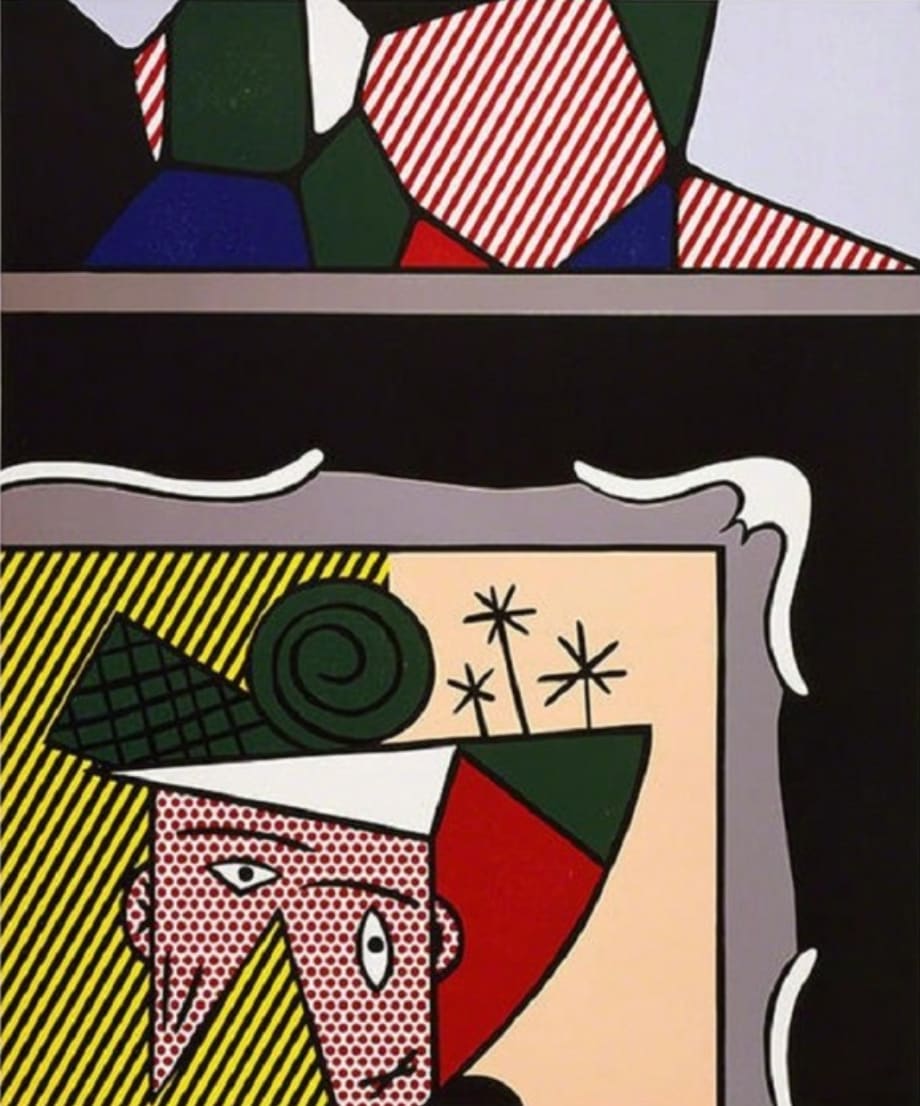
Roy Lichtenstein
114.3 x 99.1 cm
Roy Lichtenstein’s Two Paintings (1984) is a striking example of the artist’s fascination with art history, appropriation, and the dialogue between different modes of representation. Created through a technically ambitious combination of woodcut, lithograph, silkscreen, and collage, the work reflects both Lichtenstein’s mastery of printmaking and his conceptual approach to the act of picture-making itself.
The composition is split into two distinct zones, each referencing a different art historical tradition. In the upper register, geometric, abstracted forms—angular planes of red, green, blue, and black—recall the aesthetics of early 20th-century modernism, particularly the Cubist and Synthetic movements pioneered by artists such as Picasso and Braque. Below, another framed image depicts a stylized face that draws heavily upon Picasso’s portraits of women, translated into Lichtenstein’s Pop idiom of bold outlines, Ben-Day dots, and flat fields of saturated color.
By juxtaposing these two styles within a single print, Lichtenstein stages a conversation across time, exploring how the avant-garde breakthroughs of modernism had, by the 1980s, become canonized, consumed, and reprocessed as part of the larger visual culture. The use of collage further emphasizes this layering of traditions, literally assembling disparate artistic languages into one unified surface.
The artist’s signature techniques—the use of commercial printing aesthetics, graphic flatness, and industrial clarity—function here as both homage and critique. Lichtenstein acknowledges the radical innovation of Picasso and his peers, while simultaneously flattening and re-mediating their work, reframing it through the lens of Pop Art’s commentary on reproduction and commodification.
Formally, Two Paintings is a tour de force of printmaking. The interplay of woodcut textures, lithographic shading, and silkscreen precision demonstrates Lichtenstein’s technical range, while the collage elements inject physical depth into the otherwise mechanically precise surface. The dynamic contrast between abstract geometry and stylized figuration captures the tension between modernist experimentation and Pop’s ironic detachment.
Ultimately, Two Paintings encapsulates Lichtenstein’s ongoing project: to question how meaning is constructed, transmitted, and transformed within visual culture. It is both an homage to and a playful critique of modernism’s legacy, filtered through the artist’s cool, graphic sensibility.
For more information or to buy Two Paintings (1984) by Roy Lichtenstein, contact our galleries using the form below.